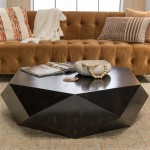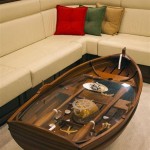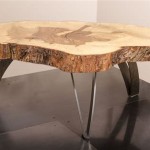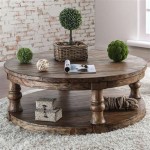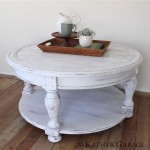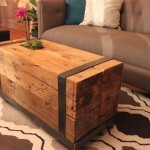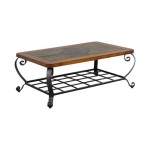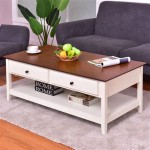Modern Table Centrepiece Ideas: Elevating Your Dining Experience
The table centrepiece, traditionally a focal point in dining settings, has evolved significantly in modern design. No longer relegated to formal occasions, centrepieces now play a crucial role in defining the aesthetic of everyday dining spaces and special events alike. The modern approach favours simplicity, elegance, and the integration of natural elements. It emphasises creating a visual impact without obstructing conversation or overwhelming the overall décor.
Modern table centrepieces are characterized by clean lines, minimalist designs, and the strategic use of materials. They reflect a departure from overly ornate and complex arrangements, opting instead for arrangements that are both aesthetically pleasing and functionally practical. The selection of a suitable centrepiece depends on several factors, including the size and shape of the table, the overall style of the room, and the occasion for which the table is being set.
Key Considerations for Modern Centrepiece Design
Before embarking on selecting or creating a modern table centrepiece, it is essential to consider several key factors. These considerations will ensure that the chosen design complements the existing décor and serves its intended purpose effectively. The following are crucial elements to take into account.
First, the scale of the centrepiece in relation to the table is paramount. A centrepiece that is too large will overwhelm the table, making it difficult for diners to interact and potentially creating an obstruction. Conversely, a centrepiece that is too small will appear insignificant and fail to make the desired visual impact. The ideal size should be proportional to the table's dimensions, leaving ample space for place settings and serving dishes. A general guideline is to ensure that the centrepiece does not exceed one-third of the table's length.
Second, the height of the centrepiece is a critical factor affecting visibility and communication. An excessively tall centrepiece can obstruct the view of guests across the table, hindering conversation and creating an uncomfortable dining experience. The goal is to select a centrepiece that is either low-profile or tall and narrow, allowing for unobstructed sightlines. Options include low floral arrangements, shallow bowls with floating candles, or tall, slender vases with minimalistic floral displays. The chosen height should facilitate comfortable interaction among diners.
Third, the colour palette of the centrepiece should harmonize with the existing décor of the room and the table setting. Consider the colours of the walls, furniture, and tableware when selecting the colours for the centrepiece. A cohesive colour scheme will create a visually appealing and balanced aesthetic. Neutral colours, such as white, cream, and grey, offer versatility and can be easily incorporated into various design styles. Alternatively, incorporating accent colours from the surrounding décor can create a coordinated and stylish look. It's important to avoid clashing colours that can detract from the overall aesthetic.
Popular Modern Centrepiece Styles
Modern centrepiece designs encompass diverse styles, each offering a unique visual appeal. Some of the most popular styles include minimalist arrangements, naturalistic displays, geometric compositions, and sculptural creations. The selection of a specific style depends on the desired aesthetic and the overall design of the dining space.
Minimalist arrangements prioritize simplicity and functionality. These centrepieces often feature a single element, such as a solitary vase with a single flower stem or a collection of candles arranged in a clean, geometric pattern. The focus is on highlighting the beauty of the individual element without unnecessary clutter. Minimalist centrepieces are ideal for modern, contemporary spaces that emphasize clean lines and uncluttered surfaces.
Naturalistic displays incorporate elements from the natural world, such as branches, stones, moss, and succulents. These centrepieces evoke a sense of organic beauty and can bring a touch of the outdoors into the dining space. Arrangements may involve artfully arranging driftwood, creating a miniature landscape with succulents, or showcasing a collection of smooth river stones. Naturalistic centrepieces are particularly well-suited for rustic, Scandinavian, and bohemian-inspired interiors.
Geometric compositions utilize geometric shapes and patterns to create visually striking centrepieces. These arrangements often feature vases or containers with geometric designs, or incorporate geometric elements such as spheres, cubes, and pyramids. Geometric centrepieces add a sense of structure and order to the table setting and are ideal for modern and contemporary spaces with a strong emphasis on clean lines and geometric forms.
Sculptural creations transform the centrepiece into a work of art. These arrangements often utilize unconventional materials and forms to create a unique and eye-catching focal point. Sculptural centrepieces may involve repurposing everyday objects, creating abstract designs with metal or glass, or showcasing intricately carved wood or stone sculptures. Sculptural centrepieces are ideal for eclectic and artistic spaces that embrace unconventional design elements.
Materials and Elements Used in Modern Centrepieces
The materials and elements used in modern centrepieces contribute significantly to their overall aesthetic appeal and functionality. Common materials include glass, metal, wood, stone, and natural elements such as flowers, foliage, and branches. The selection of materials depends on the desired style and the overall design of the room.
Glass is a versatile material that can be used in various forms, from sleek vases to delicate candle holders. Glass centrepieces offer a sense of transparency and lightness, allowing the surrounding décor to shine through. Clear glass is particularly well-suited for minimalist arrangements, while coloured or textured glass can add a touch of visual interest.
Metal adds a touch of modernity and sophistication to the table setting. Metal centrepieces can be crafted from various metals, including stainless steel, brass, copper, and iron. Metal elements can range from sleek geometric sculptures to intricate candle holders with a modern edge. The choice of metal depends on the desired aesthetic and the overall colour scheme of the room.
Wood adds warmth and texture to the table setting. Wood centrepieces can be crafted from various types of wood, including reclaimed wood, bamboo, and polished hardwoods. Wood elements can range from rustic wooden bowls filled with fruit to intricately carved wooden sculptures. Wood centrepieces are particularly well-suited for rustic, Scandinavian, and bohemian-inspired interiors.
Stone adds a sense of grounding and natural beauty to the table setting. Stone centrepieces can be crafted from various types of stone, including marble, granite, and slate. Stone elements can range from smooth river stones arranged in a bowl to intricately carved stone sculptures. Stone centrepieces are particularly well-suited for minimalist and naturalistic designs. Natural elements, such as flowers, foliage, and branches, are essential for creating a sense of life and vitality in the centrepiece. Flowers can be arranged in vases, bowls, or other containers, while foliage and branches can be used to add texture and depth to the arrangement. The selection of flowers and foliage depends on the season and the desired colour palette. Seasonal blooms offer a fresh and vibrant touch, while evergreen foliage provides a year-round source of greenery.
Candles are also a popular addition to modern centrepieces, adding ambience and creating a warm, inviting atmosphere. Candles can be arranged in glass holders, metal stands, or incorporated into naturalistic displays. The use of different sizes and shapes of candles can add visual interest to the arrangement. Scented candles can also be used to add a subtle fragrance to the dining space.
By considering these key points and exploring the various styles, materials, and elements available, one can create a modern table centrepiece that elevates the dining experience and enhances the overall aesthetic of the space.

15 Centrepiece Ideas For Your Dining Table Foxy Home Staging

15 Centrepiece Ideas For Your Dining Table Foxy Home Staging

15 Centrepiece Ideas For Your Dining Table Foxy Home Staging

28 Stunning Dining Table Centrepieces Furniturebox

28 Stunning Dining Table Centrepieces Furniturebox

28 Stunning Dining Table Centrepieces Furniturebox

Beautiful And Easy Dining Room Table Centerpiece Ideas Stonegable

16 Modern Dining Table Centerpieces You Can Use Year Round

Kitchen Table Centerpiece Design Ideas Pictures

15 Centrepiece Ideas For Your Dining Table Foxy Home Staging
Related Posts

